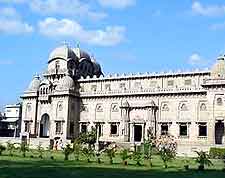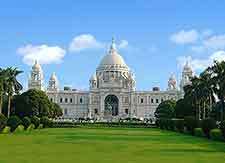Kolkata History Facts and Timeline
(Kolkata / Calcutta, West Bengal, India)

Kolkata, previously known as Calcutta, is one of the few cities in India that was largely created by the British Empire to secure its trading centres on the subcontinent.
Indeed, it was deemed important enough to be the British capital in India for many years. Interestingly, the history of Kolkata is also interwoven with threads of revolution against the British Empire, and today it is one of India's largest and most vibrant urban centres.
A British Outpost
The history of Kolkata can be traced back to three villages that were taken over in 1690 by the British East India Company - Sutanuti, Gobindapur and Kalikata. The latter, Kalikata, was a fishing village and the largest of the three. Most historians date the creation of modern Kolkata with the construction of the original Fort William at this site on the coast, which was completed at the beginning of the 18th century.
The Trouble with Nawabs
The British were struggling with the French for control over India in the mid-1700s, as part of the spillover of the global Seven Years' War. In 1758, the building of a new Fort William commenced, in anticipation of more skirmishes with the French. This angered Siraj ud-Daulah, Nawab of Bengal, who warned the British to cease and desist.
When the British ignored Siraj ud-Daulah, he assaulted and seized Fort William. The Nawab punished the British soldiers in a gruesome incident known as the Black Hole of Calcutta, where they brutally killed all the prisoners of war. A year later, the British came back with a larger force and reclaimed Kolkata after signing a treaty with Siraj ud-Daulah.

Capital City
In 1772, Kolkata was given the role of capital of all the territories controlled by the East India Company. During the Carnatic Wars between the British and the French, the British and their allies were able to continue fighting from their stronghold at Kolkata. This helped the East India Company to eventually push the French out of India and punish the Nawabs that helped them.
From the mid-18th century and into the 19th century, Kolkata was the centre for the opium trade, which was managed by the East India Company. Richard Wellesley, the governor-general of India from 1798 to 1805, was the driving force behind the development of the city. He drained the swampy land surrounding the Hooghly River and laid out the city along its banks. Its growth and importance stems from the export of opium to China in exchange for a burgeoning demand for tea, and this led to the Opium Wars of the mid 19th Century.
A City Divided
By the 1850s, Kolkata was mainly segregated by its White Town, where the British lived around Chowringhee, and its Black Town, where the Indians lived in the northern section of the city. The latter decades of the 19th century saw rapid industrial growth and development in Kolkata, especially in the textile and jute sectors. At the height of the British Raj on the Sub Continent, British companies heavily invested in infrastructure and factories.
This division of society fed into India's caste system and created a new class of upper-class Indians, who became the professionals and bureaucrats of the city. In 1883, this rising class of intelligent Indians organised the first Indian National Association conference.
Revolution
The history of Kolkata quickly became immersed in the revolutionary organisations of the day, associated with the Indian independence movement. The Partition of Bengal in 1905 sparked a boycott of British goods, prompting the British to relocate their capital to New Delhi in the year of 1911.
The remnants of British rule can be seen all over the city, marking the history of Kolkata with a distinctly British atmosphere, which is very much evident in the city's architecture and infrastructure.
 Kolkata, previously known as Calcutta, is one of the few cities in India that was largely created by the British Empire to secure its trading centres on the subcontinent.
Kolkata, previously known as Calcutta, is one of the few cities in India that was largely created by the British Empire to secure its trading centres on the subcontinent.